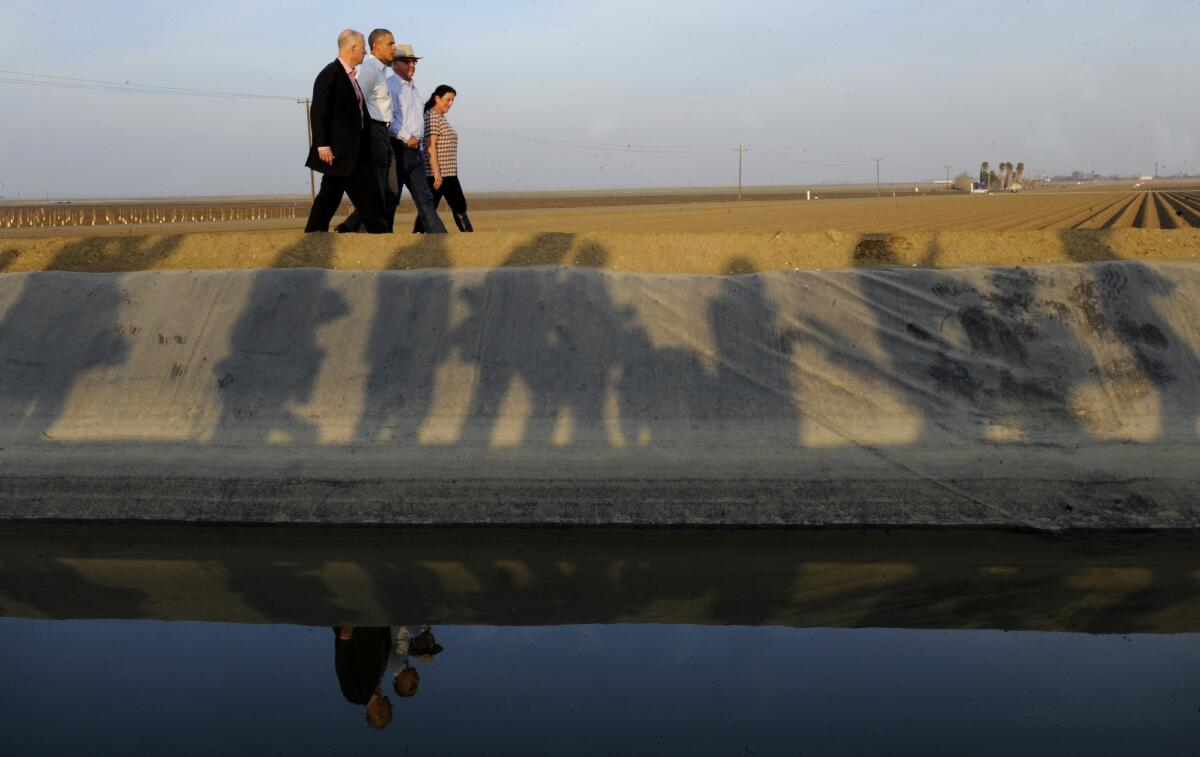Most Central Valley growers to get no water from Central Valley Project

- Share via
Central Valley growers Friday got the grim news they have been expecting for months. Most of them will get no water from the big federal irrigation project that supplies 3 million acres of California farm land.
Citing the state’s severe drought, the U.S. Bureau of Reclamation announced an initial water allocation of zero for most contractors of the sprawling Central Valley Project.
That could change. There is a month of winter left and storms on the Northern California horizon could boost reservoir levels, allowing reclamation to deliver more water. But the agency has never before predicted zero deliveries for such a sweeping set of contractors in the Sacramento and San Joaquin valleys.
The bureau even plans to give districts with the most senior water rights only 40% of their contract supply – the deepest cut ever for that group.
“While not a surprise, hearing @usbr give Zero Allocation of #cawater to millions of acres of land is so depressing,” tweeted one San Joaquin Valley farmer.
Farm groups estimate that more than a half million acres of crop land will remain unplanted this year for lack of water. That would still leave the vast majority of the state’s irrigated fields in production.
Growers will pump groundwater to make up for the delivery loss and buy supplies from senior rights holders. And one of the biggest irrigation districts in the country, the Imperial Irrigation District in southeast California, is not facing any cuts because it gets supplies from the Colorado River.
Most CVP contractors are agricultural. The project also supplies some urban agencies, which are being cut to 50% of their historic use.
Reclamation spokesman Louis Moore said if storms expected in Northern California next week and in early March improve conditions, the allocations could go up.
In the meantime, the agency is harboring supplies. “We have to look at some real tough decisions about how to use the water that is available,“ he said.
Earlier in the year, the State Water Project, which helps supply Southern California, also announced zero deliveries in the face of one of the most severe droughts in the state’s modern history.
Despite that loss, urban districts in the Southland say they have enough water in reserve to avert rationing this year.
bettina.boxall@latimes.com
Twitter: @boxall







